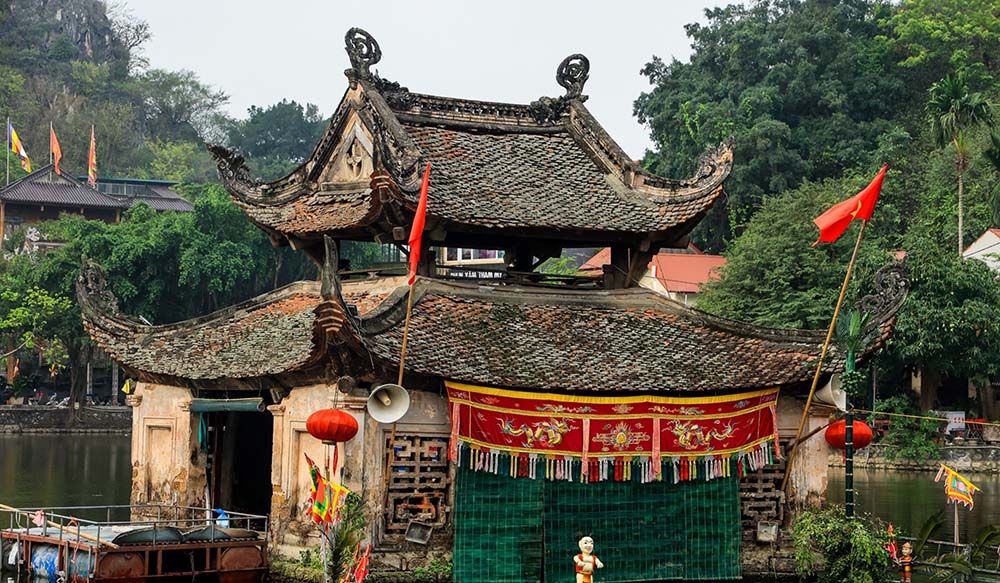
1. Overview of Thay Pagoda Festival
- Some features about Thay Pagoda
Thay Pagoda, also known as Thien Phuc Tu, is a tourist attraction in Hanoi, located against Phat Tich Mountain. This place is not only a famous scenic spot, recognized as a special national monument in 2014, but also a "Red Address" during the resistance wars. Thay Pagoda is a unique architectural monument with carved art and a typical system of dharma statues.
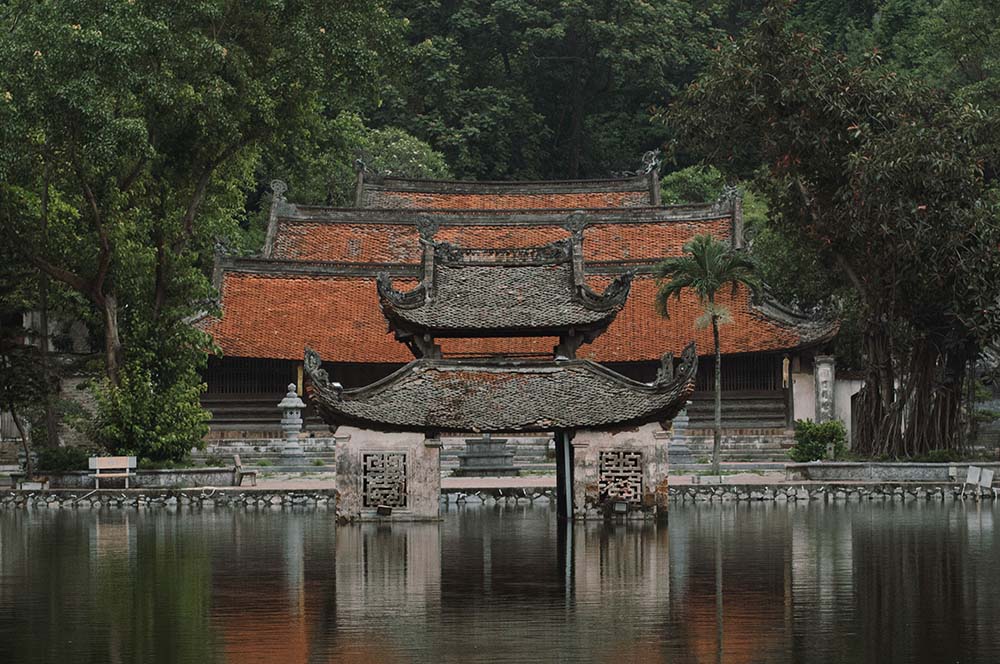
The pagoda is a complex of relics and landscapes with many tourist attractions. The three buildings of the Front Hall - Buddha Palace - Holy Palace are arranged in the shape of a Tam from the outside, creating a massive appearance with many pillars and pillars... The pagoda also has a close connection with the cave complex, creating a unique feeling. rich in types during festivals.
- Time and location of the Thay Pagoda Festival
Thay Pagoda Festival is held right at Thay Pagoda - a pagoda leaning against the foot of Phat Tich Mountain, Sai Son commune, Quoc Oai district, Hanoi city.
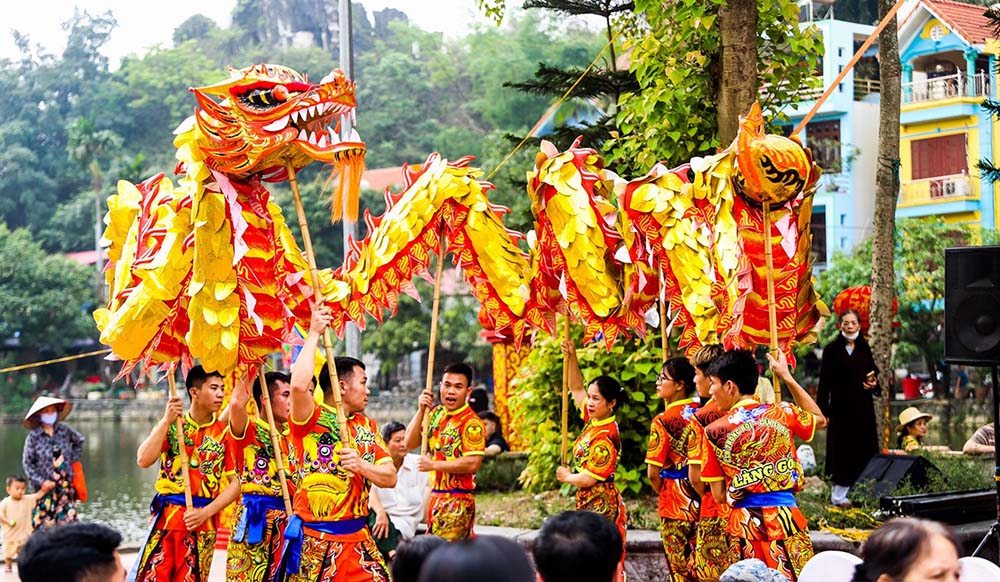
Thay Pagoda Festival is a big festival that takes place from the 3rd to the 7th of the 3rd lunar month every year. This festival attracts the participation of many people to explore the region's cultural features. So don't miss this interesting festival in your itinerary to explore Hanoi!
- The meaning of Thay Pagoda Festival
Thay Pagoda is a place to worship the Dharma Master Tu Dao Hanh with his 3 lives. He is a Monk, a Buddha, a King and is considered by the people to be the founder of Vietnamese water puppetry.
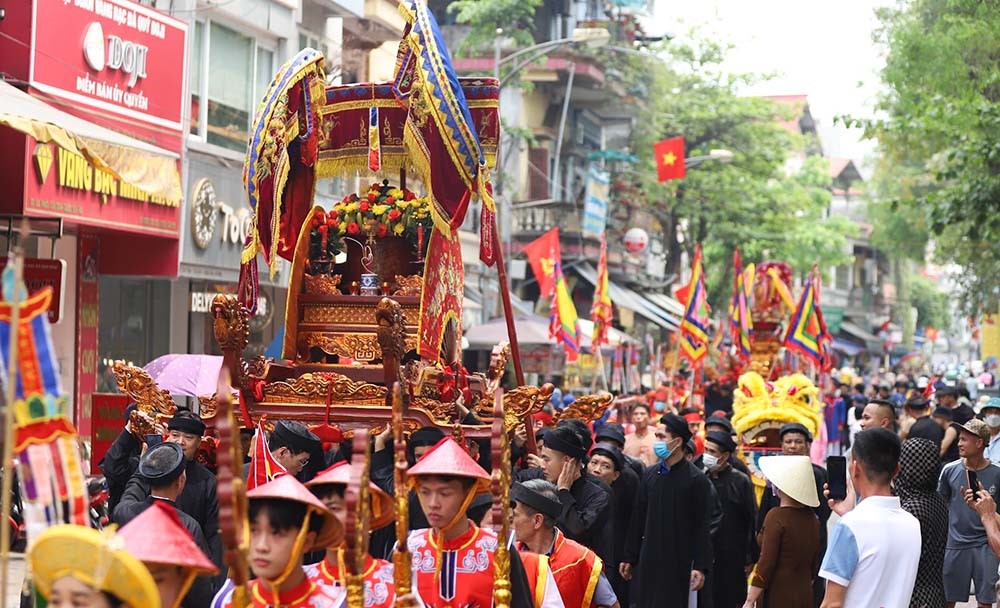
People around Doai, from old to young, all know about the thrilling story of Zen master Tu Dao Hanh, who was instrumental in curing illnesses and teaching the villagers. He taught about culture, shuttlecock, wrestling, water puppetry... from then on, people admired his talent and virtue. People come to Thay Pagoda festival for many different purposes: some pray for love, some pray for luck, money, and some come to enjoy the scenery here.
2. Thay Pagoda Festival - A religious feature of national culture
- Ceremony
Moc Duc Ceremony
Moc Duc ceremony, also known as statue bathing ceremony, every year on the morning of March 5, people along with people in the temple prepare scented water and new towels to conduct the ritual. The water to bathe the statue is rainwater boiled with 5 types of fragrant leaves. Participating in the statue bathing ceremony with the abbot in the temple were 12 village elders. To be chosen to participate in this ritual, the elders must be people with good morals, trustworthy and respected by the people in the village, have a happy family, and even though they are old, they must have a clear mind. The ceremony took place in a solemn atmosphere under the witness of guests and villagers.
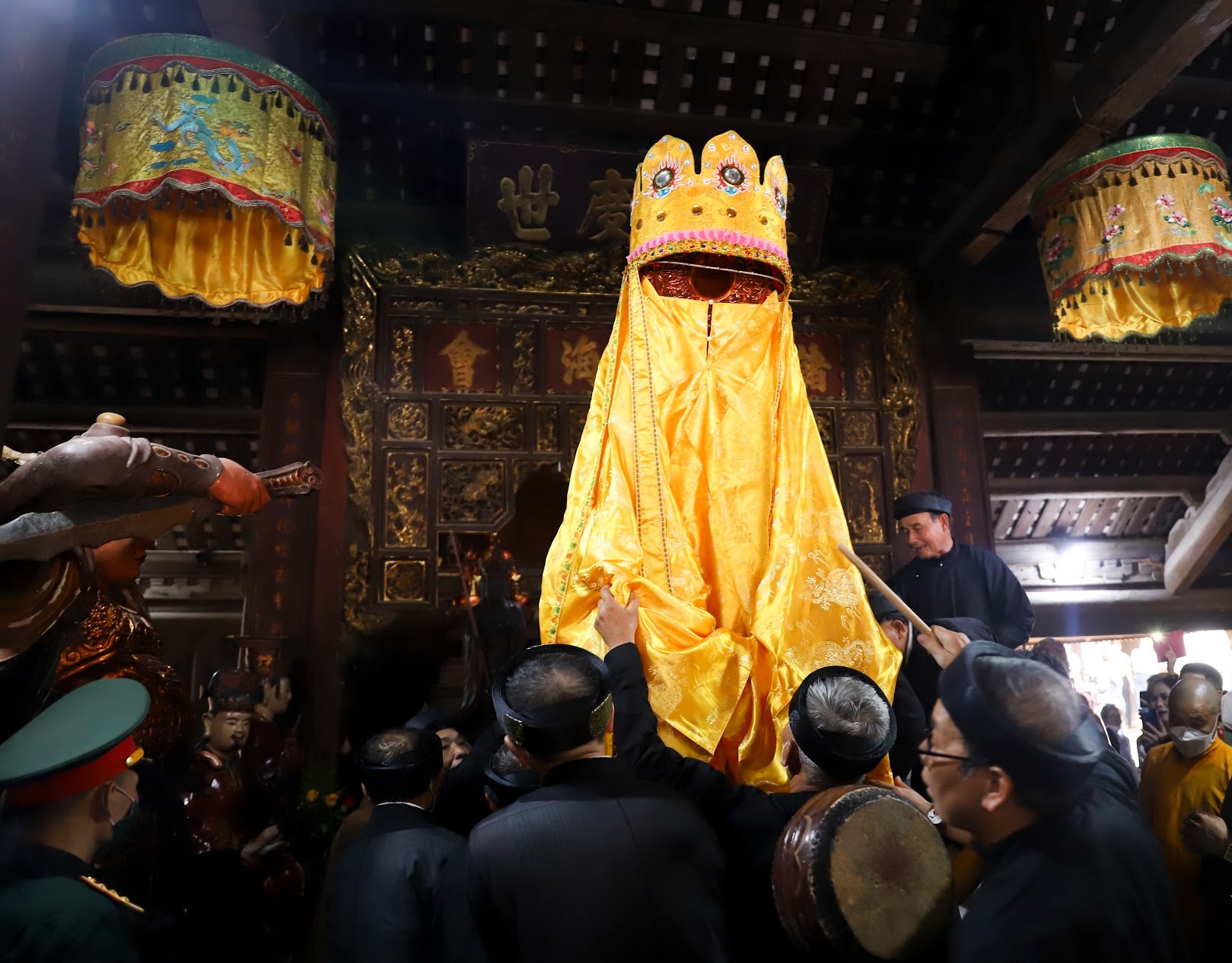
Liturgical ceremony to welcome the tablet and worship the altar
The next part of the ceremony is the procession of the statue of the Holy Tu Dao Saint from the Holy Palace to the Central Pagoda so that the Saint can witness the rituals taking place during the three days of the festival. The ceremony begins with reciting prayers in the village filled with incense and smoke. After reading the prayer for permission, the monk and the elders proceed to bathe the statue. The statue is carefully and thoroughly washed with fragrant water and changed into new clothes. All activities are carried out in solemnity and respect, the saint's tablet is carefully shielded, along the path down are rows of elders wearing rosaries, holding banners, and tablets being carried in procession to rest at the Central pagoda.
Sacrifices and processions
March 7 is considered the main holiday of the festival, this is called Great Tet. On this day, 4 monks from the village went to pay their respects to Thay Pagoda. At the forefront of the procession were bannermen, servants carrying banners, and finally flags from the five directions, halberds, gongs, and drums. The palanquins of the four villages will gather in front of the temple yard to hold the worship ceremony, starting from Thay Pagoda to Thieng Hill.
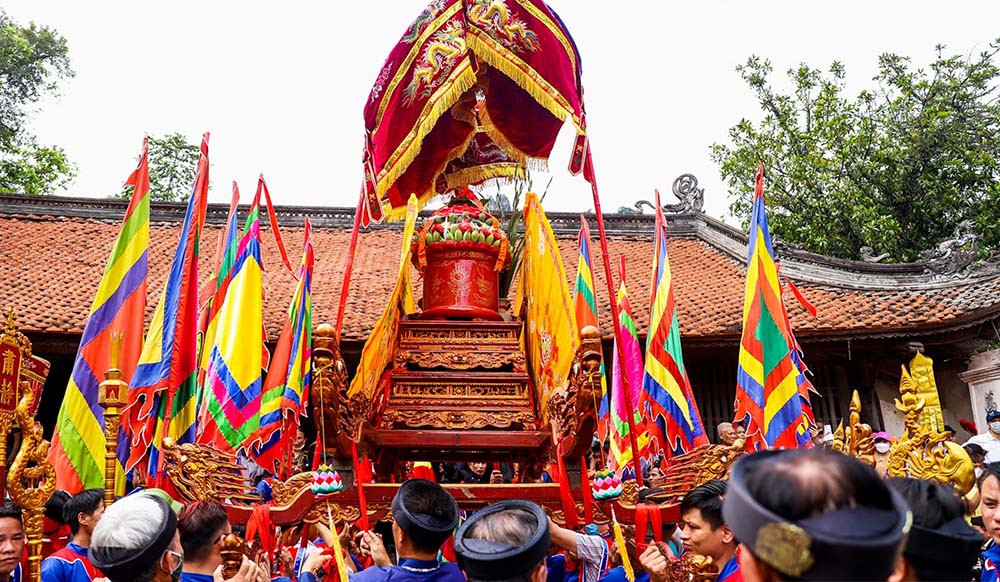
The villages take communion to the temple so that the monk can be the abbot in charge to observe and celebrate the Holy Mass. At this time, the Saint's yellow robe will be replaced with a Buddhist robe. People call this changing of clothes "going to God to return to Buddha" to recreate the cultivation process of Saint Tu, first cultivating an immortal and then attaining enlightenment to become a Buddha.
Whichever village the procession goes to, that village will hold a ceremony to place the holy palanquin there to congratulate and pray for the Saint's protection and blessings for the people in the village.
- Assembly section
The festival part takes place in parallel with the ritual part. The large lawn in front of the pagoda depicts many folk games such as wrestling, shuttlecock... or climbing mountains to admire the scenery and enter Cac Co cave. This is your opportunity to take pictures checking in to Hanoi!
Puppet festival

Zen Master Tu Dao Hanh is the founder of water puppetry, so Thay Pagoda is also considered the cradle of water puppetry. During the festival, Thuy Dinh's house will be brightly decorated with printed fabrics decorated with dragons, cups, turtles, and phoenixes. The water puppet festival is held in Thuy Dinh as an underwater game. Actually, I have watched many water puppet shows, but there is no place as special as the puppet show at Thay Pagoda. The images of villages and people's daily activities seem to be miniature and vivid on the water surface. The puppet shows are skillfully performed by artisans with a rhythmic combination of music and lyrics that make the puppets come to life and create attraction for viewers. The water puppet show has a strange appeal that contributes to creating a bustling festival
Blindfolded smashing pot game
Smashing pots blindfolded has become a familiar folk game in Northern festivals. The rules of the game are relatively simple, just need the player to cover their eyes and be able to hit the hanging pots to win. The cheers of everyone along with the instructions from teammates create a bustling scene, causing curiosity and excitement for visitors and residents. With the enthusiasm of the players, they have contributed to bringing a joyful atmosphere and creating regional characteristics that not every festival has.
In addition to outstanding games, the festival also has many unique and exciting folk games to attract tourists to participate.
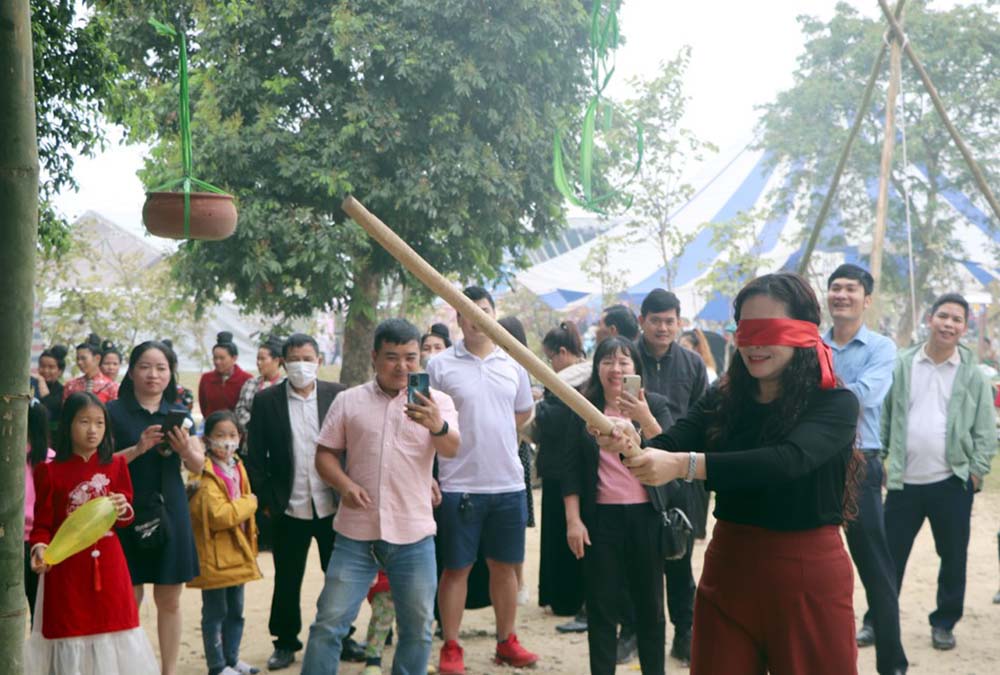
3. A few notes when coming to Thay Pagoda festival
- Thay Pagoda is located in a relatively rugged mountainous area, so visitors should not wear high heels, and are encouraged to wear flat and comfortable shoes.
- Some useful items for the trip are wet towels, paper fans, wind oil, temple offerings, masks...
- You need to dress elegantly and politely when participating in the festival.
Thay Pagoda Festival is considered the happiest holiday in the North in the summer. The majesty and magic of the temple combined with the bustling ceremonies and festivals make the space here always attractive to visitors. With the aim of turning the Thay Pagoda festival into a more friendly and attractive spiritual cultural tourism destination, the festival is promised to always be well received and have more interesting points in the future.
